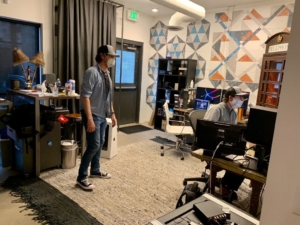The Law of the Carrot

Today’s post, The Law of the Carrot, is written by guest blogger is Ryszard Chciuk. In his own words:
For the first half of my professional life I worked for Hydrobudowa-6 SA. At that time, it was one of the biggest construction companies in Poland. There, I was responsible for technical availability of all kinds of heavy construction machines and equipment, mobile cranes and trucks. We needed them on projects like constructing long distance pipelines, subway stations, expressways, airfields, industrial buildings or pumped storage power plants. I was in charge of up to 440 people, including mechanics and field technicians, machine operators, truck drivers, procurement, warehouses, and administration.
In the period of 22 years, I learned how my colleagues, project managers, utilized machines and equipment and what they needed to complete their projects on time and within the budget. It gave me a solid foundation to undertake a commitment to create the best after-sales organization in Poland for my new employer, Volvo CE.
The core of my service management team comprised of several highly motivated people who shared my idea of service excellence. Together, we built a very successful service organization. Within 10 years, we multiplied the number of employees ten times, up to almost 150 people in 2013. We generated average service and parts sales growth 22% yearly. My team established new standards on the demanding, after-sales market.
The Law of the Carrot
Seven years ago, I decided to retire, though I have not fully accomplished my goal to create the best construction equipment service organization in my country. Since then, I have posted over one hundred articles on my blog (in the Polish language) to support all the people focused on service excellence. My blog is directed to the construction equipment users and service managers, because I see both groups as complementary parts of every construction activity. They should know their expectations, which are very often completely opposite. They should also understand their daily limitations.
When my guru Ron Slee asked me to write a short article for this blog, I decided to follow Steve Day, a guest blogger for Learning Without Scars: “I thought that I might write about something important that I did not focus on enough until way too late in my career”. In my case this is about motivation. Truly speaking, I hate that word. This is because my superiors used to do their best to demotivate me during almost all of my professional life.
As a deadly enemy of negative motivation, I always tried to motivate my people in a positive way. I spent a lot of time and energy designing and implementing motivational systems for many teams I was in charge of. Those systems were mostly based on financial incentives, though fortunately not all of them.
Since I got retired, I have had enough time to look back. I learned about the Law of the Carrot on the seminar of Andrzej Blikle (Professor in mathematics and computer science at the Institute of Computer Science of the Polish Academy of Science and in the years 1990-2010 the president and CEO of A. Blikle Ltd, a family firm established in 1869 in Warsaw, known for its luxury pastry shops). His Law of the Carrot says: “The sole purpose of each carrot is to make a stick out of it”.
When you are rewarded with a carrot, you seem satisfied (please pay attention that it works only for a very limited time). Your superior gave you a tasty carrot but now it’s already been eaten.
If you were not rewarded with a carrot you looked very unhappy. Almost imperceptibly a carrot transformed itself into a stick.
What about your improper behavior (according to your superior)? You are punished. It’s a stick motivation. Next time, you will do your best to avoid the stick on your back. It does not matter if the way you avoid punishment has a positive impact on your company. You feel as comfortable as when you are awarded with a carrot. So, this time a stick has transformed itself into a carrot.
Too many managers still believe people must be awarded or punished to work well. They say it is human nature to be lazy and dishonest. Of course, the manager himself is not lazy and dishonest. Conclusion: a manager is not a human being. Am I wrong?
I am ashamed I did not notice that my very fast-growing service team was the most effective and happy, during at least the first three years of building our countrywide organization (we began in 2002). Those times, almost all of us used to spend five days a week in service cars and hotels, solving problems of customers with their heavy machines, in the field, despite the weather, lack of parts stock and no administrative procedures. It was the time all of my team members including field technicians, service supervisors, and parts personnel were paid only monthly salary – no bonuses, no financial incentives, and no paid overtime. We did not register work hours. Field technicians decided on the spot, how many hours they were to work to solve customers’ problems, before going asleep. You do not believe it worked? Nobody quit during the first three years, though the core people could easily find better paid jobs. Then and later on, many new people were hired and almost all of them were brought on board by our team members. The only visible incentives for field technicians were mobile workshops, equipped with all indispensable tools, so that nobody in the market could compete with us – we were proud of our service vans.
How was it possible? We were pioneers and we felt like ones because we had a common goal to build something much better than anything we could observe around. That was power of internal motivation, neither a carrot nor a stick incentive.
For more information on our programs, please visit us at Learning Without Scars.









